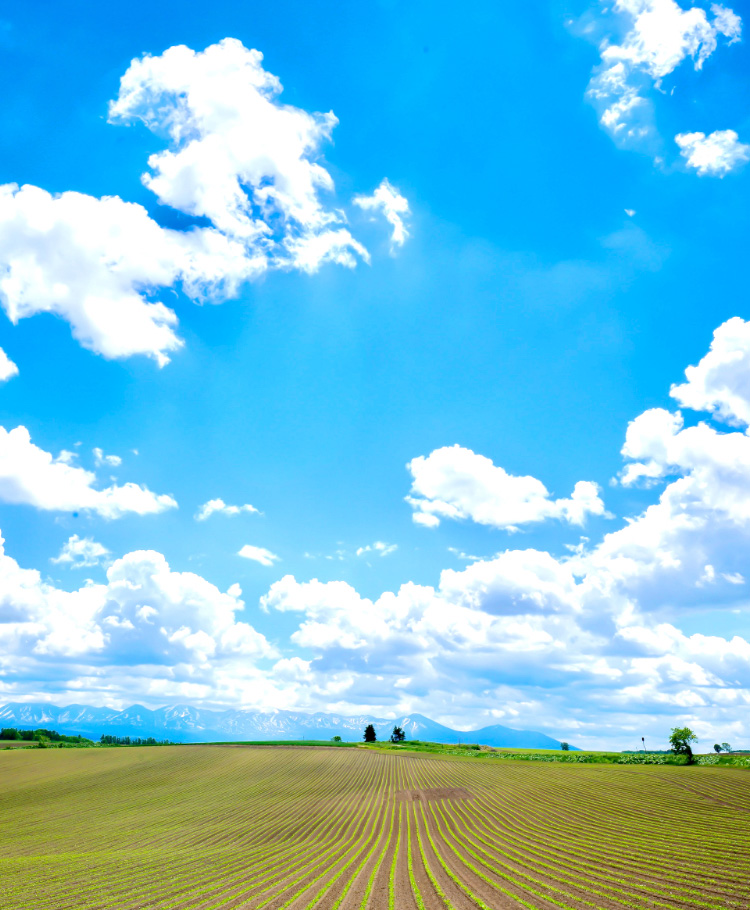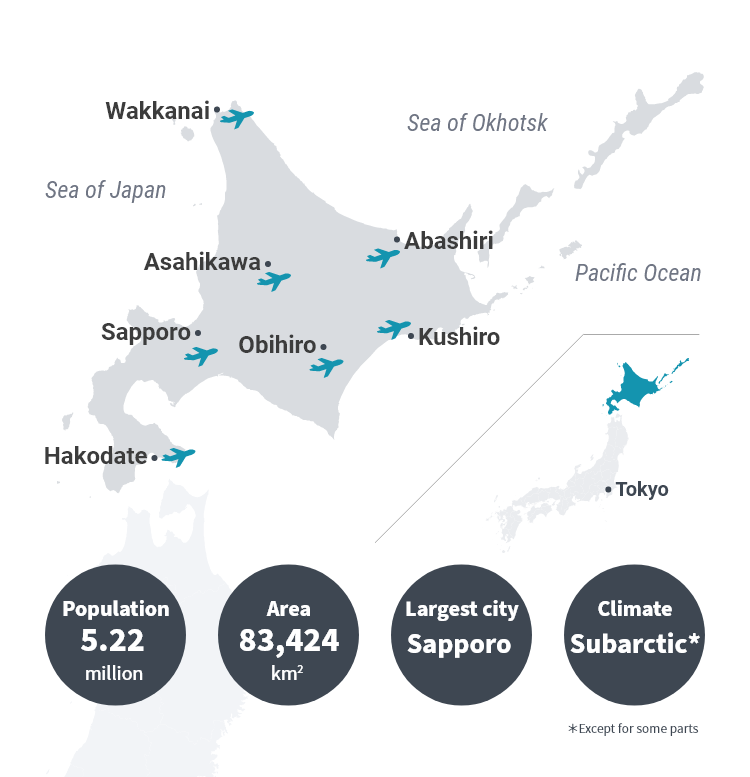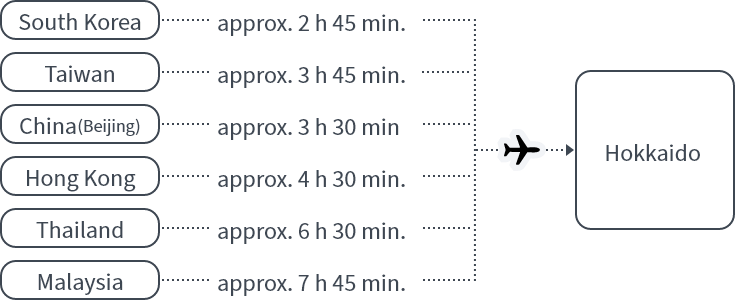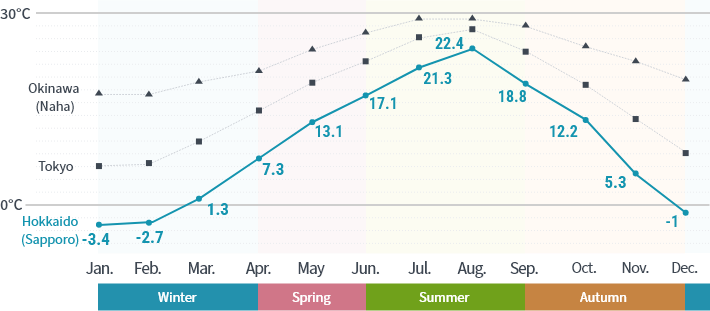

AboutHOKKAIDO
Welcome to Hokkaido—a land of excitement awaits you in the north of Japan.
Overview

Hokkaido has magnificent natural sceneries located at the northernmost tip of Japan and surrounded by seas. It is home to the Shiretoko World Natural Heritage Site, lush mountains, and Japan's most extensive marshland. Many flights from major cities across Japan fly to Hokkaido, with well-connected regional air routes. International flights fly to New Chitose Airport, Hokkaido's leading gateway to the skies, as well as to Asahikawa Airport and Hakodate Airport.

※The times required are approximations based on flights to and from New Chitose Airport as of January 2024.
Climate and Temperature
Hokkaido has cool, dry weather with clear distinctions between the four seasons. Sapporo's latitude is almost the same as Vladivostok in Russia. While there are days when the maximum temperature exceeds 30°C in summer, mornings and evenings often feel chilly. As there is little impact from the rainy season or typhoons, Hokkaido has many relatively dry and comfortable days. from autumn to winter, temperatures drop rapidly, and in winter they drop below freezing even during the day. The snowfall period is long, with melting usually starting in early spring. Due to the varying terrain and ocean currents, the climate is different across the prefecture, so travelers should be prepared for these changes.
Average temperature
[Hokkaido (Sapporo) / Tokyo / Okinawa (Naha) ]
*JMA Statistical period: 1993-2022

Temperature and appropriate clothing at each airport
Hokkaido’s Charms
Even within Japan, Hokkaido has a history that differs greatly from that of Honshu. Hokkaido has been nurtured by its magnificent nature and unique culture. Hokkaido's one-of-a-kind charm and the variety of exciting experiences it offers captivate tourists from all over the world.

Seasons
The changing seasons beautifully color the northern land. After a long winter, spring arrives with a burst of flowers, followed by a refreshing summer with lush greenery and blue skies. Autumn brings fiery foliage, and winter turns the landscape into an enchanting, snowy world. Each season offers entirely different sceneries, making all four seasons genuinely captivating.

Nature
The harsh yet rich nature creates unique and breathtaking landscapes, such as untouched forests, dynamic coastlines, and mystical lakes and marshes. The unique ecosystems of the flora and fauna nurtured here are also rare. The beautiful mountains' foothills give rise to nature's blessings: hot springs. Outdoor baths with views of magnificent scenery are exceptional. Hokkaido has several hot spring towns offering high-quality waters that soothe travel weariness.

Gourmet
Thanks to the rich natural environment, Hokkaido is a gourmet paradise offering top-notch cuisine from various ingredients. Sushi and seafood bowls using fresh seafood are a must-try, as dairy products, including rich cheese and ice cream. Don't miss out on the ramen noodles and jingisukan (Mongolian barbecue).

Culture
Hokkaido weaves its unique culture and history, with sites from the Jomon period (Japanese prehistorical period from about 15,000 to 2,400 B.C.) registered as World Heritage Sites. It is deeply influenced by Ainu culture. The Ainu people, known for their own language, beliefs, sculptures, embroidery, songs, and dances, are highly regarded for their artistic qualities. Valuing coexistence with nature, they pass down their traditions orally, making these cultural sites important for passing knowledge to future generations.
How big is Hokkaido?
Hokkaido is the largest prefecture in Japan, occupying about 22% of the country's land area. It is so large that the distance from Tokyo to Osaka can fit entirely within it. When traveling across this vast region, using airplanes is recommended. There are 12 airports in the prefecture, so choose the best one depending on your destination. Using different airports for arrival and departure can also make your travel route more efficient.


